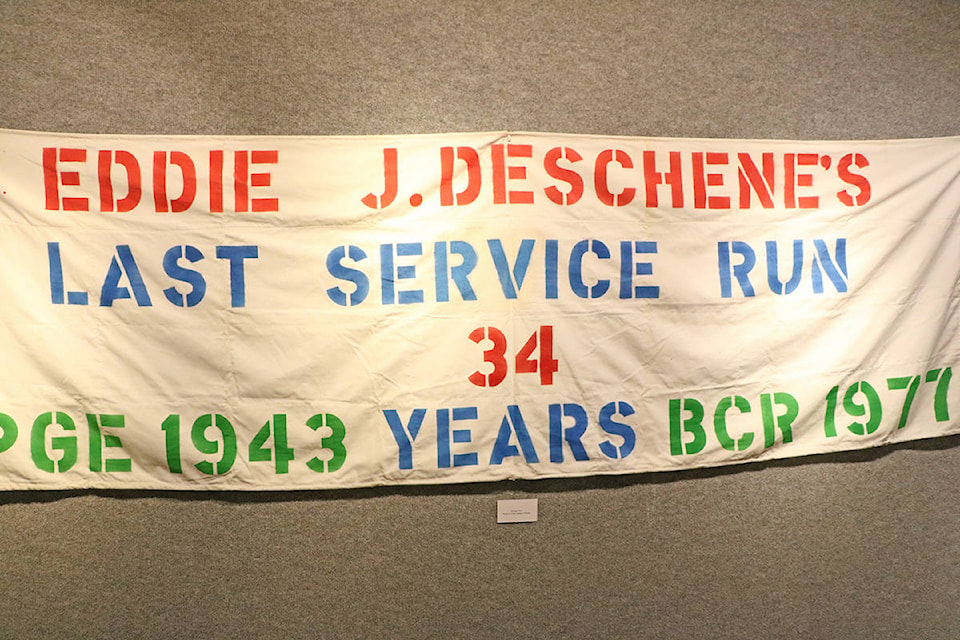This summer in the Station House’s Main Gallery lakecity locals are invited to learn about and visit the building that celebrates its 100 year birthday this year.
At the show’s opening on Thursday, July 4 the occasion was marked by dozens of lakecity art lovers, dignitaries and citizens with the cutting of a specially made cake by Taylor Made Cakes and Sweets, along with other good food and drink. It all contributed to making the Station House the bustling community heart of Williams Lake it’s been for just over a century now.
The Station House originally opened back in 1919 and quickly became a touchstone of the early Williams Lake community, especially whenever the weekly train came to town. Largely run down by the sixties, it was nearly demolished before a group of concerned citizens rallied together and saved the building. Since the early eighties, its enjoyed a new life as an art gallery and has showcased over 550 exhibitions for the lakecity, once more becoming the centre of culture and community.
Mayor Walt Cobb said a few words to commemorate the event, joking that he’s not quite old enough to remember when the building was first constructed. Cobb does remember, however, the efforts of the people who would go on to found the Station House Studio and Gallery Society in ensuring the building was not demolished in the 1970s like the old courthouse was. While he said it would have been great to turn that building into the museum, he was pleased the Station House had survived and wished it a happy birthday.
Read More: Station House building turns 100 this year
MLA Donna Barnett was also in attendance and praised the volunteers that put their hearts and souls into ensuring the Station house is maintained and receives adequate funding.
“You can never have enough art, it’s something that some of us who couldn’t draw a straight line are jealous of, but you need people like us to buy it,” Barnett joked. “Congratulations and happy birthday.”
Cutting the cake for the event was 91-year-old Elizabeth Abbott, who grew up in the Station house when her father Howard Gibbon was station master. She remembers it fondly as a great youth and had a lot of fun playing in and around the building with her friends growing up.
One of her childhood friends, 89-year-old Mary Skipp, who lived on the “wrong side of the tracks” across from the Station House smiled widely as she recalled how she and Abbott used to throw water on the passengers from the windows for fun.
Back then, when the train came in a twice a week, it was the gathering place of the community Abbott said attracting all the police, teachers and bank employees.
Her mother would always have “goodies” ready for everyone who came by to see who was getting off the train, the “big news” of the week.
“Quite often there were quite a few celebrities who would come in, so it was pretty exciting growing up here. We could play on the roundhouse and on the turntable for the engine. We used to turn that around and we were quite mischievous and always getting reprimanded,” Abbott said.
One thing Abbott did not enjoy, however, were the -40C to -50C winters of her youth because there were no double panes in the Station House’s windows then. To see outside you would have to scrape them first with a penny, Abbott said, because of how frosted the glass became.
She thinks the fact her childhood home was saved and converted into an art gallery is “wonderful” and really makes it an asset for the City of Williams Lake. Abbot really likes seeing it continue to be an active part of the community and hopes it continues to be so well into the future.
The exhibit itself consists largely of historical artifacts and pictures related to the Station House, many on loan from the Museum of the Cariboo Chilcotin. Unique amongst them, however, are several new photos taken around the Station House using a camera model of a similar age.
The photographer and owner of the Kodak 2D 8X10 field camera, Rick Magnell, is a hobbyist photographer and videographer with a passion for analogue photography.
The Station House helped kick start his use of his camera by providing him with several railway related tintypes and developing chemicals to use with the camera.
“It was made for tin plates, glass plates or film, you can use all three depending on what plate holder you buy for it,” Magnell said.
All told Magnell took four photos for the exhibit, though he said he may be doing a fifth one in the near future, three on tintype plates and one on a glass type. Each one was of the Station house itself or a person with familial ties to the Station House, shot as their ancestors would have been at the time.
Shooting tintypes is something Magnell has always wanted to do and while it took a little work to get his camera back into working order, he was quite happy with how the project ended up turning out.
Magnell plans to continue to use the camera in the future and is hoping to make a dark box that can fit in his car that will allow him to make the camera mobile.
“I appreciate the opportunity to do this project for (the Station House) it’s kind of kickstarted my interest in tintypes.
So it was nice to speed me up and do the things I wanted to do a little sooner,” Magnell chuckled.
This exhibit runs from the start of July until August 31 so be sure to go and check it out.
patrick.davies@wltribune.com
Like us on Facebook and follow us on Twitter
